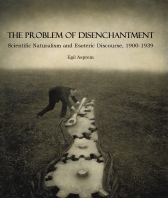I don’t often make structural changes and clean-ups at Heterodoxology. One of the results is that the blogroll is not always up to date. I won’t claim that it is now either, but at least I have made an attempt to update it ever so slightly. You will now find a basic classification of blog categories (not quite happy with it, but it’ll have to do for now): history of science, religious studies, esoterica/pagan, skeptical, and academic miscellany.
Coptic scholars are in a strange position compared to most other researchers of arcane and obscure corners of history: their field occasionally makes world-wide news headlines, especially when there is some text claiming something about a certain carpenter from Nazareth. Last week newspapers across the world announced that someone writing in coptic on a piece of papyrus some time possibly in the 4th century had insinuated that the carpenter might have had a wife. Sensational, but well: it turns out the papyrus fragment is most likely not authentic. Read more about the arguments in this excellent post by Hugo Lundhaug and Alin Suciu. (For the record – this is the first time I reblog anything, so bear with me).
First of all, it should be clearly stated that, although in the following lines we shall express our doubts concerning the authenticity of the so-called Gospel of Jesus’s Wife, our suggestions remain hypothetical until the ink of the document has been properly tested. Secondly, our analysis does not refer either to the figure of the historical Jesus, or to his marital status, which are beyond our field of expertise, but only to a literary fragment written in Coptic, whose identity is suspicious.
During the 10th International Congress of Coptic Studies, which took place September 17-22, 2012 in Rome, the Harvard Professor Karen L. King introduced to us a previously unknown Coptic papyrus fragment.
Her paper was delivered on Tuesday, September 18, from 7.00 o’clock P.M., in one of the rooms of the Patristic Institute ‘Augustinianum.’ We estimate that about…
View original post 1,476 more words






